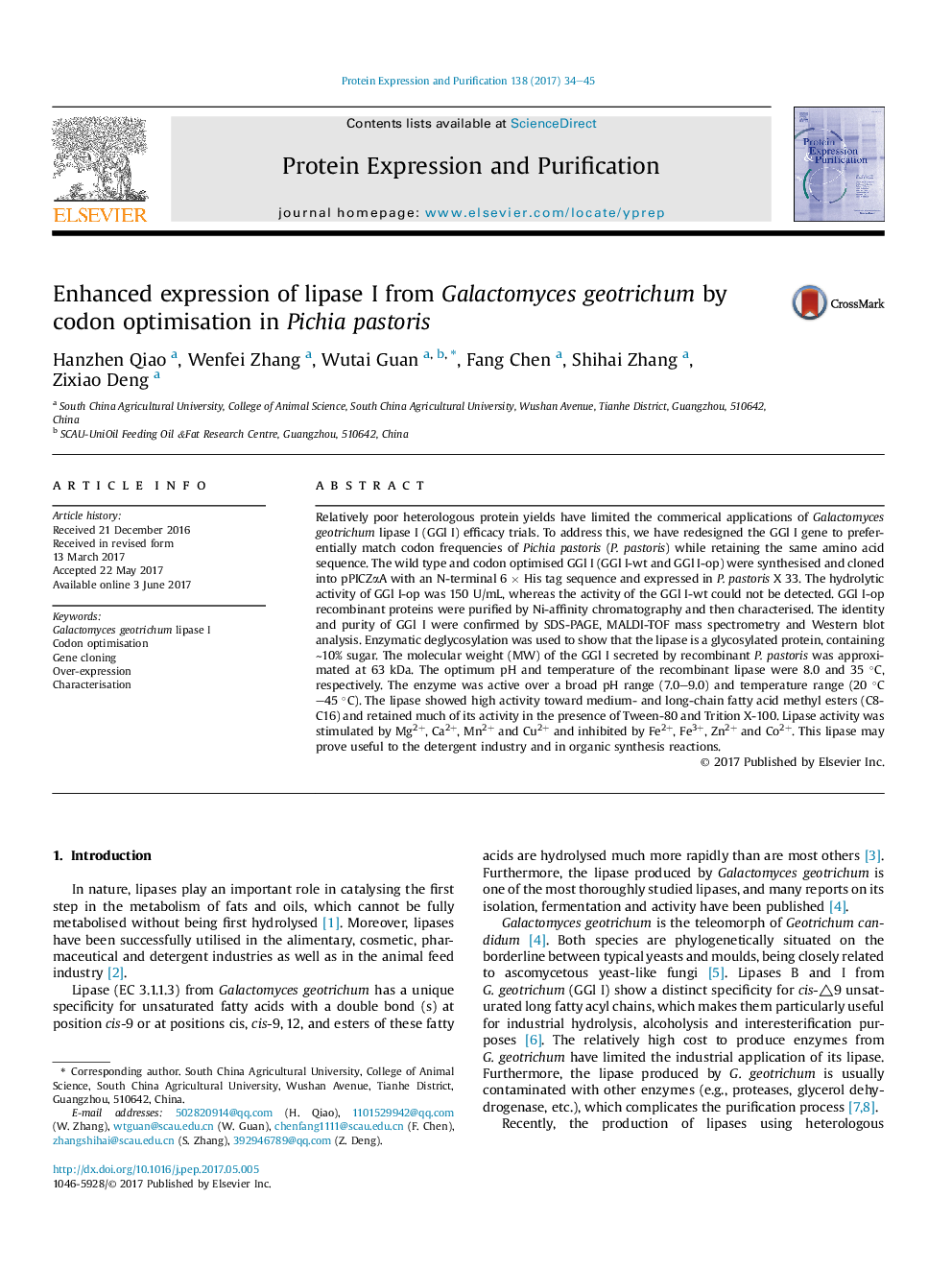| کد مقاله | کد نشریه | سال انتشار | مقاله انگلیسی | نسخه تمام متن |
|---|---|---|---|---|
| 5515999 | 1542303 | 2017 | 12 صفحه PDF | دانلود رایگان |

- Codon-optimized GGl I is overexpressed in P. pastoris with activity of 150 U/mL.
- The enzyme was active over a broad pH range and temperature range.
- Exhibiting high activities towards medium and long chain fatty acid methyl esters.
- Presumed glycosylation of the recombinant GGl I was confirmed.
Relatively poor heterologous protein yields have limited the commerical applications of Galactomyces geotrichum lipase I (GGl I) efficacy trials. To address this, we have redesigned the GGl I gene to preferentially match codon frequencies of Pichia pastoris (P. pastoris) while retaining the same amino acid sequence. The wild type and codon optimised GGl I (GGl I-wt and GGl I-op) were synthesised and cloned into pPICZαA with an N-terminal 6 Ã His tag sequence and expressed in P. pastoris X 33. The hydrolytic activity of GGl I-op was 150 U/mL, whereas the activity of the GGl I-wt could not be detected. GGl I-op recombinant proteins were purified by Ni-affinity chromatography and then characterised. The identity and purity of GGl I were confirmed by SDS-PAGE, MALDI-TOF mass spectrometry and Western blot analysis. Enzymatic deglycosylation was used to show that the lipase is a glycosylated protein, containing â¼10% sugar. The molecular weight (MW) of the GGl I secreted by recombinant P. pastoris was approximated at 63 kDa. The optimum pH and temperature of the recombinant lipase were 8.0 and 35 °C, respectively. The enzyme was active over a broad pH range (7.0-9.0) and temperature range (20 °C-45 °C). The lipase showed high activity toward medium- and long-chain fatty acid methyl esters (C8-C16) and retained much of its activity in the presence of Tween-80 and Trition X-100. Lipase activity was stimulated by Mg2+, Ca2+, Mn2+ and Cu2+ and inhibited by Fe2+, Fe3+, Zn2+ and Co2+. This lipase may prove useful to the detergent industry and in organic synthesis reactions.
211
Journal: Protein Expression and Purification - Volume 138, October 2017, Pages 34-45